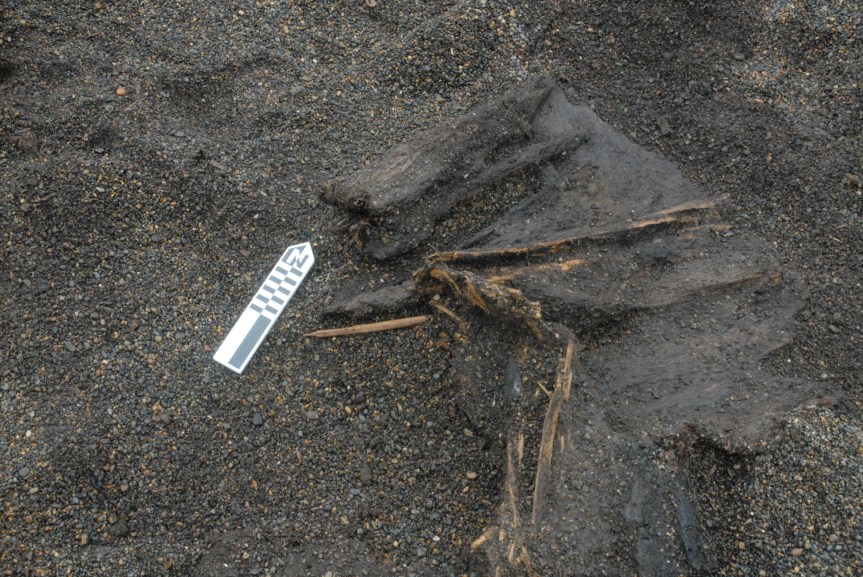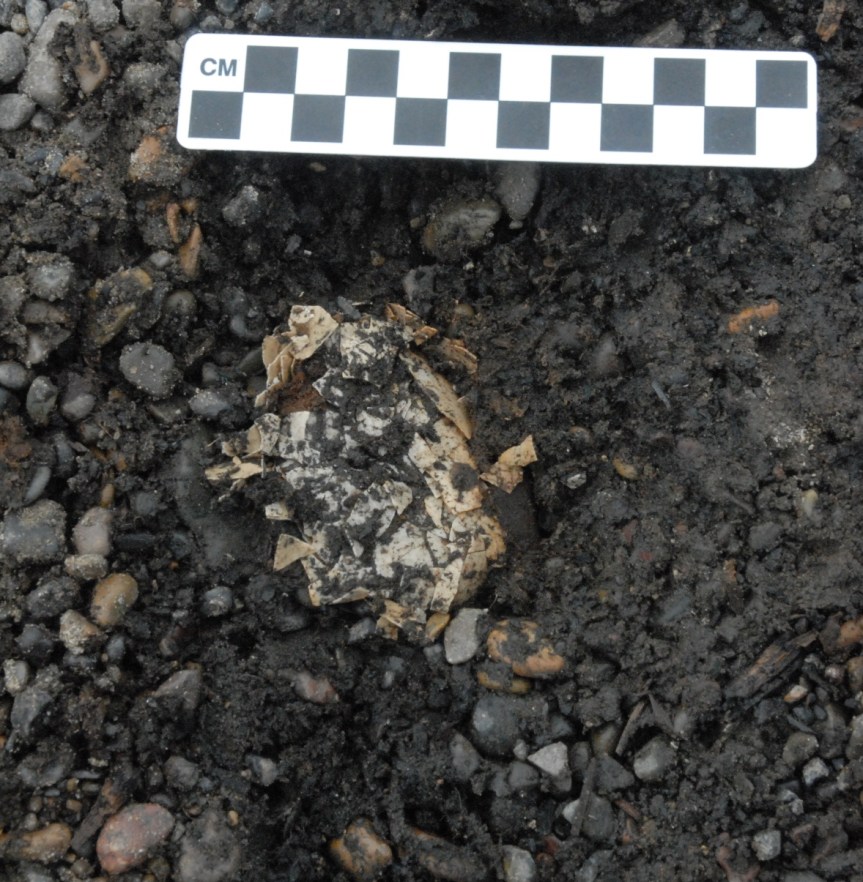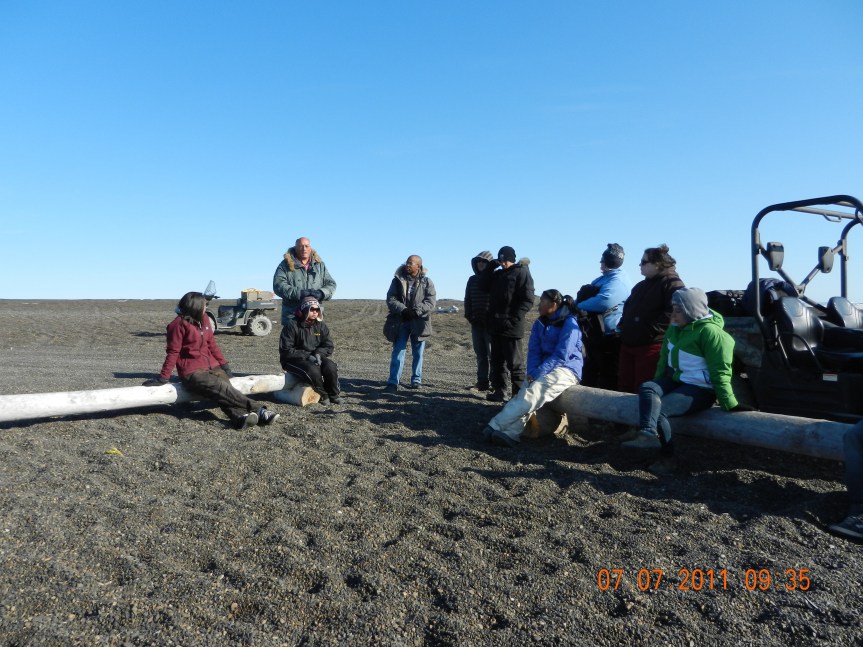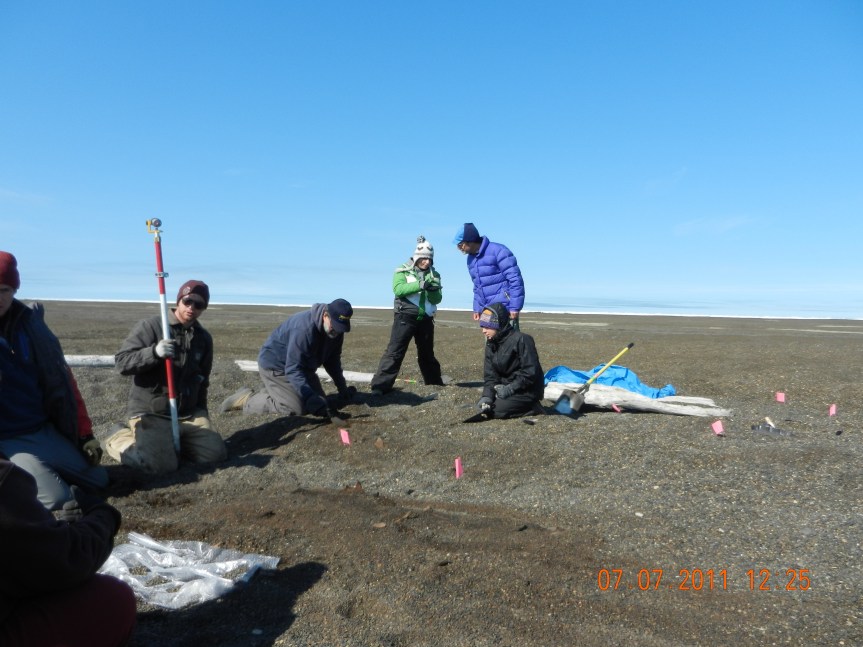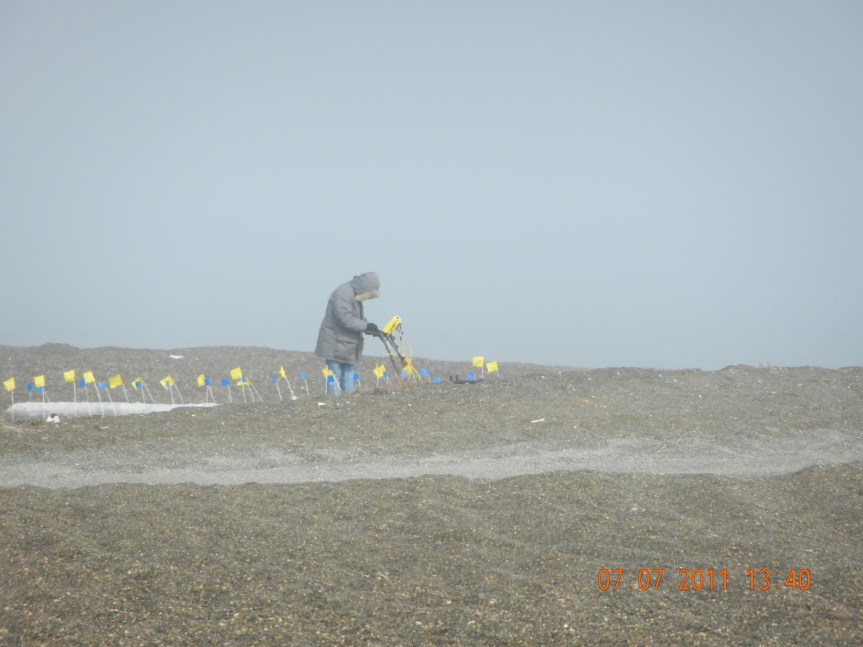A big part of the past couple weeks has involved choosing the crew for work at Nuvuk. There are two funding sources for this project. One is a grant to the North Slope Borough from the Department of Education, through the Education through Cultural and Historical Organizations program (ECHO), and the other is a regular research grant from the Arctic Social Sciences program of the Office of Polar Programs of the National Science Foundation.
The ECHO funds are targeted at K-12 education, so they need to be used for pre-college students and those who teach/supervise them. We’ve been focusing on high school students for those slots. For one thing, we run the dig for these students as a job. That way, even if they don’t find their life’s work in archaeology, they’ll have some spending money for the next school year, and will have learned about interviews, resumes, time-sheets, paychecks and good work habits before they are out on their own. Students who are less than 15 are very restricted in the hours they can work, even in the summer. The first year, we hired a couple of students that young, only to find that every time we needed to stay late in the field (usually because something exciting was happening) we’d have to send them home or violate child labor laws. Essentially, they got punished for being young, which was really no fun for anyone :-(. After that, we only hired students who were older, and could work some OT, so they wouldn’t need to go home just when things got really exciting.
We’ve been doing interviews with students who haven’t worked before, both to assess motivation and to make sure they understand what they are getting into. It’s really cold at Nuvuk, even compared to Barrow, and the wind comes right off the ice. With the field season so short, and the erosion ongoing, we don’t take many weather days.
We’ve also been seeing who is returning, and for how much of the season they are available. Many of the high school students who want to work at Nuvuk are active in many things, including sports (with summer camps), band, Mayor’s Youth Advisory Council, Model UN, and Rural Alaska Honors Institute. Most of these involve some travel, so scheduling is complex. We need to have a good-size crew, but not more than we have 4-wheelers for (allowing for a couple of folks in the lab or sick). I actually do that in MS Project, just so I can get a clear picture and spot pinch-points more easily.
Anyway, we’ve got all the high school students selected, and have notified most of them, except for the ones who are out of town on family vacations. We’ve also got one person on tap for the NSF-funded crew, but it looks like we might have room for 1-2 more, since the planned GPR component fell through. Rhett Herman, a geophysicist from Radford U. in Virginia who has worked with us at Nuvuk in the past, was going to do some geophysical prospecting for burials, which would save us much time & effort. He had hoped to run a field school, but funding was not available for this summer, so a couple of interested students were going to come up as participants in the dig and help with the GPR on the side. Rhett’s wife has come down with some unexplained health problems, and he obviously doesn’t want to travel so far while they are unresolved. Looks like -2 for the crew. So I need to see if I can find suitable replacements.

